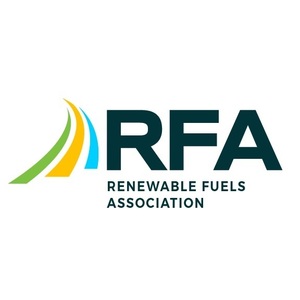RFA: Success of SAF tax credit depends on fair, science-based LCA

February 21, 2023
BY Renewable Fuels Association
The use of science-based, consistent and transparent lifecycle analysis methods will be crucially important in implementing the sustainable aviation fuel (SAF) tax credit under the Inflation Reduction Act, the Renewable Fuels Association said in comments submitted Friday to the Department of Treasury. RFA’s comments were in response to a request for comments from the Treasury on considerations for implementation of the SAF credit.
“SAF production presents a major new market opportunity for ethanol producers, as the lifecycle carbon footprint of ethanol continues to shrink and the economics of ethanol-to-jet fuel processes continue to improve,” wrote RFA President and CEO Geoff Cooper. “The ethanol industry sees tremendous promise and potential in the emerging market for sustainable aviation fuels. The ethanol industry has the scale and capacity to deliver the volume of feedstock to meet SAF volume targets for the decades to come.”
Advertisement
Advertisement
However, Cooper pointed out that fair and consistent lifecycle analysis (LCA) modeling must be used for all potential SAF feedstocks and production pathways. “Rules which effectively pick one technology or feedstock over another or use incomplete or outdated science could serve as a barrier to entry and keep production volumes from reaching targets,” he wrote. Cooper noted that RFA member companies have unanimously committed to achieve net-zero carbon emissions by 2050 or sooner.
RFA continues to believe the most appropriate lifecycle analysis methodology for the determination of SAF emissions is the GREET model, developed and updated regularly by the Department of Energy’s Argonne National Laboratory. Cooper stressed that GREET—an acronym for Greenhouse Gases, Regulated Emissions, and Energy Use in Transportation—is widely considered to be the leading and most sophisticated model, and it is more robust and current than the methodology used by the International Civil Aviation Organization.
“The ethanol industry looks forward to playing a central role in the carbon reductions achieved through the use of SAF,” Cooper said. “However, Treasury/IRS should be cognizant of the potential barriers to entry and disincentives for investment that faulty or incomplete LCA modeling can create. With the right policy signals and support – including technology-neutral LCA, particularly Argonne GREET, ethanol-to-jet technologies can quickly scale up to meet the future SAF needs of the aviation sector.”
Advertisement
Advertisement
Related Stories
CountryMark on July 22 celebrated the completion of more than $100 million in upgrades at its refinery in Indiana, including those related to soybean oil storage. The facility produces renewable diesel via coprocessing technology.
ATOBA Energy and Air Moana are partnering to implement scalable solutions for the supply of SAF. The collaboration aims to ensure long-term SAF availability while supporting local initiatives to develop sustainable fuel production in Tahiti.
While final IRS guidance is still pending, the foundation of the 45Z program is well defined. Clean fuel producers should no longer be waiting; they can now move forward with critical planning and preparation, according to EcoEngineers.
Neste Corp. on July 24 released second quarter results, reporting record quarterly renewable product sales volumes despite weaker margins. SAF sales were up nearly 80% when compared to the first quarter of 2025.
Valero Energy Corp. on July 24 released second quarter results, reporting a profitable three-month period for its ethanol segment. The renewable diesel segment posted a loss, but the company’s new sustainable aviation fuel (SAF) unit operated well.
Upcoming Events










